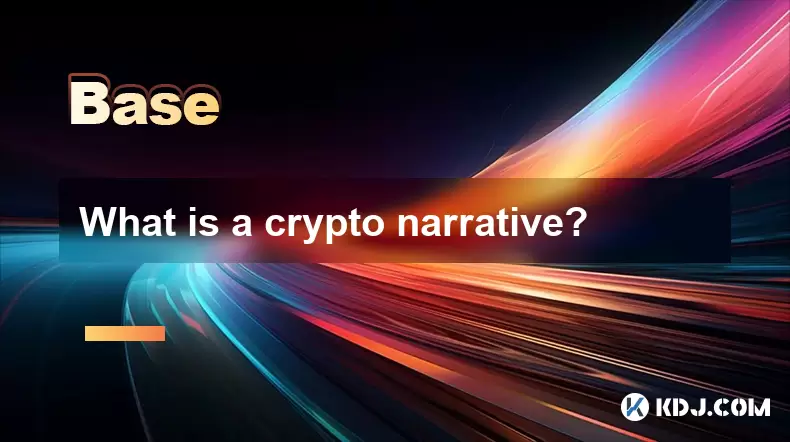-
 Bitcoin
Bitcoin $108,010.6153
-0.99% -
 Ethereum
Ethereum $2,535.1451
-1.14% -
 Tether USDt
Tether USDt $1.0002
-0.01% -
 XRP
XRP $2.2599
-0.33% -
 BNB
BNB $660.3442
-0.18% -
 Solana
Solana $149.0762
-1.43% -
 USDC
USDC $0.9999
0.00% -
 TRON
TRON $0.2866
-0.41% -
 Dogecoin
Dogecoin $0.1669
-2.73% -
 Cardano
Cardano $0.5765
-1.53% -
 Hyperliquid
Hyperliquid $38.5005
-2.98% -
 Bitcoin Cash
Bitcoin Cash $496.7709
-0.04% -
 Sui
Sui $2.8522
-2.12% -
 Chainlink
Chainlink $13.2812
-1.50% -
 UNUS SED LEO
UNUS SED LEO $9.0486
0.17% -
 Stellar
Stellar $0.2466
-2.57% -
 Avalanche
Avalanche $17.8271
-2.84% -
 Shiba Inu
Shiba Inu $0.0...01158
-1.66% -
 Toncoin
Toncoin $2.7359
-4.01% -
 Hedera
Hedera $0.1563
-1.78% -
 Litecoin
Litecoin $85.8096
-1.80% -
 Monero
Monero $313.7645
-2.86% -
 Dai
Dai $1.0002
0.02% -
 Polkadot
Polkadot $3.3494
-1.35% -
 Ethena USDe
Ethena USDe $1.0003
0.03% -
 Bitget Token
Bitget Token $4.2980
-3.40% -
 Uniswap
Uniswap $7.3906
-0.28% -
 Aave
Aave $280.1449
-2.34% -
 Pepe
Pepe $0.0...09833
-2.41% -
 Pi
Pi $0.4546
-2.21%
What does "ape in" mean?
"Ape in" in crypto means investing impulsively without research, driven by hype or FOMO, often leading to high risks like scams or market crashes.
Jul 07, 2025 at 11:21 pm

What Does "Ape In" Mean in the Cryptocurrency Space?
In the world of cryptocurrency, "ape in" is a slang term that refers to the act of investing or buying into a project without doing thorough research. This behavior typically involves making impulsive decisions based on hype, social media trends, or Fear Of Missing Out (FOMO). The phrase is often used in a somewhat humorous or cautionary tone within crypto communities.
The origin of the phrase can be traced back to the saying “apes together strong,” which became popular among retail investors and crypto enthusiasts. It symbolizes the idea that when small investors band together, they can influence markets—sometimes even against institutional players.
Why Do People "Ape In"?
There are several psychological and social factors that drive individuals to "ape in." One of the most common reasons is FOMO, especially when a particular token or NFT collection starts gaining rapid traction online. Seeing others make quick profits can tempt inexperienced investors to jump in without understanding the underlying value or risks.
Another factor is the influence of social media platforms like Twitter, Reddit, and Discord. When certain projects are heavily promoted by influencers or community leaders, it creates a bandwagon effect. Many users feel compelled to follow the crowd rather than analyze the fundamentals of a project.
Additionally, some people "ape in" because they believe in the concept of community-driven investing. They trust the collective wisdom of the group rather than traditional financial analysis. While this can sometimes lead to success, it also exposes them to scams, rug pulls, and volatile price swings.
How to Recognize an "Ape In" Situation
Identifying whether you're about to "ape in" requires self-awareness and critical thinking. Here are some signs:
- Lack of research: You haven’t read the whitepaper, checked the team’s background, or evaluated the technology behind the project.
- Hype-driven decision: Your interest was sparked solely from seeing posts or videos urging immediate action.
- Unrealistic promises: The project claims guaranteed returns or sudden wealth with little explanation.
- Pressure to act fast: You feel rushed to invest before fully understanding what you’re getting into.
Recognizing these red flags can help prevent rash decisions and reduce the chances of falling victim to speculative bubbles.
Examples of "Ape In" Behavior in Crypto
One notable example of "ape in" culture occurred during the rise of memecoins like Dogecoin and Shiba Inu. These tokens gained massive popularity due to celebrity endorsements and viral internet trends, despite lacking real-world utility or strong development teams.
Another instance happened during the NFT boom, where digital collectibles were being bought and sold for astronomical prices overnight. Many buyers didn’t understand blockchain art or smart contracts but jumped in because everyone else was doing so.
Even decentralized finance (DeFi) has seen its share of aping in, particularly with yield farming opportunities offering high APRs. Users flocked to new protocols without checking if the platform had been audited or if the tokenomics made sense.
Risks Associated With Ape-In Investing
While some investors have profited from aping in, the strategy carries significant risks:
- Rug pulls: Developers abandon the project and take funds after creating hype.
- Extreme volatility: Prices can skyrocket and crash within hours, leading to substantial losses.
- Scams and fraud: Fake tokens or phishing sites may mimic trending projects to steal user funds.
- Regulatory uncertainty: Sudden regulatory crackdowns can wipe out entire sectors overnight.
Investors who engage in ape-in behavior often lack risk management strategies, increasing their exposure to financial harm.
How to Avoid Ape-In Investing
To avoid falling into the trap of aping in, consider the following steps:
- Do your own research (DYOR): Always review the project’s whitepaper, roadmap, team credentials, and code audits if available.
- Use trusted sources: Rely on reputable forums, official websites, and well-known analysts rather than random tweets or unverified influencers.
- Set investment limits: Only allocate funds you can afford to lose, especially in highly speculative assets.
- Understand the technology: Learn how blockchains, smart contracts, and consensus mechanisms work to better evaluate a project's legitimacy.
- Ask questions: Engage with the community and ask developers directly about unclear aspects of the project.
By adopting a more cautious and informed approach, investors can significantly reduce their chances of participating in risky ape-in scenarios.
Frequently Asked Questions
Q: Is "aping in" illegal?
No, "aping in" itself isn't illegal. However, if the project you invest in turns out to be fraudulent or violates securities laws, legal consequences could arise. Always ensure you're aware of local regulations before investing.
Q: Can I make money by aping in?
It’s possible to make money through aping in, especially during short-term hype cycles. However, it's extremely risky and not a sustainable or recommended investment strategy.
Q: What should I do if I already "aped in"?
If you’ve already invested impulsively, assess the situation calmly. Check if the project is legitimate, monitor for any red flags, and consider exiting if you detect suspicious activity or excessive risk.
Q: How does "aping in" differ from regular investing?
Regular investing typically involves research, risk assessment, and long-term planning. "Aping in" skips these steps and relies heavily on emotions, social cues, and speculation.
Disclaimer:info@kdj.com
The information provided is not trading advice. kdj.com does not assume any responsibility for any investments made based on the information provided in this article. Cryptocurrencies are highly volatile and it is highly recommended that you invest with caution after thorough research!
If you believe that the content used on this website infringes your copyright, please contact us immediately (info@kdj.com) and we will delete it promptly.
- Ethereum, Exchanges, and Price Resilience: Navigating the Crypto Landscape
- 2025-07-08 08:30:13
- From Coin Flips to Cityscapes: How Names, Parks, and Planting Shaped St. Albert
- 2025-07-08 08:50:12
- Meme Coins for the Long Haul: Investing Beyond the Hype
- 2025-07-08 08:30:13
- Bitcoin, Investment, Safe Buy: Navigating the Crypto Landscape in 2025
- 2025-07-08 06:30:12
- DegeCoin, Solana, and Meme Tokens: Riding the Wave or a Wipeout?
- 2025-07-08 07:10:12
- Brett Price, Arctic Pablo, and Meme Coins: What's the Hype?
- 2025-07-08 06:50:12
Related knowledge

What is a user-generated content (UGC) NFT platform?
Jul 04,2025 at 01:49pm
Understanding the Concept of a UGC NFT PlatformA user-generated content (UGC) NFT platform is a digital marketplace or ecosystem where users can create, mint, and trade non-fungible tokens (NFTs) that represent ownership of original digital content they produce. Unlike traditional NFT platforms where creators often include professional artists or develo...

What is composability in DeFi?
Jul 06,2025 at 04:07pm
Understanding the Concept of Composability in DeFiComposability in DeFi refers to the ability of decentralized finance protocols and smart contracts to interact seamlessly with one another, much like building blocks that can be combined in various ways to create new financial products and services. This concept is a core innovation within the DeFi ecosy...

What is a "crypto primitive"?
Jul 05,2025 at 10:14pm
Defining the Concept of a Crypto PrimitiveIn the context of blockchain and cryptocurrency, a crypto primitive refers to a fundamental building block or foundational element used in constructing decentralized systems and cryptographic protocols. These primitives are essential for enabling secure transactions, consensus mechanisms, and smart contract exec...

What is a crypto narrative?
Jul 07,2025 at 10:56pm
Defining the Concept of a Crypto NarrativeA crypto narrative refers to the overarching story or theme that drives interest, investment, and development within a particular segment of the cryptocurrency market. Unlike traditional financial assets, cryptocurrencies often gain momentum not solely based on technical merits but through compelling narratives ...

What is a stealth launch?
Jul 08,2025 at 06:42am
What Exactly Defines a Stealth Launch in Cryptocurrency?A stealth launch refers to the practice of launching a cryptocurrency project without prior public announcement or marketing efforts. This method is often used by development teams who prefer to keep their project under wraps until it reaches a certain level of maturity, adoption, or liquidity. Unl...

What is a fair launch?
Jul 05,2025 at 07:31pm
Understanding the Concept of a Fair LaunchA fair launch refers to the release of a cryptocurrency or blockchain project in a manner that ensures equal opportunity for all participants. Unlike traditional token launches, which may involve private sales, venture capital funding, or pre-mining, a fair launch emphasizes transparency and decentralization. In...

What is a user-generated content (UGC) NFT platform?
Jul 04,2025 at 01:49pm
Understanding the Concept of a UGC NFT PlatformA user-generated content (UGC) NFT platform is a digital marketplace or ecosystem where users can create, mint, and trade non-fungible tokens (NFTs) that represent ownership of original digital content they produce. Unlike traditional NFT platforms where creators often include professional artists or develo...

What is composability in DeFi?
Jul 06,2025 at 04:07pm
Understanding the Concept of Composability in DeFiComposability in DeFi refers to the ability of decentralized finance protocols and smart contracts to interact seamlessly with one another, much like building blocks that can be combined in various ways to create new financial products and services. This concept is a core innovation within the DeFi ecosy...

What is a "crypto primitive"?
Jul 05,2025 at 10:14pm
Defining the Concept of a Crypto PrimitiveIn the context of blockchain and cryptocurrency, a crypto primitive refers to a fundamental building block or foundational element used in constructing decentralized systems and cryptographic protocols. These primitives are essential for enabling secure transactions, consensus mechanisms, and smart contract exec...

What is a crypto narrative?
Jul 07,2025 at 10:56pm
Defining the Concept of a Crypto NarrativeA crypto narrative refers to the overarching story or theme that drives interest, investment, and development within a particular segment of the cryptocurrency market. Unlike traditional financial assets, cryptocurrencies often gain momentum not solely based on technical merits but through compelling narratives ...

What is a stealth launch?
Jul 08,2025 at 06:42am
What Exactly Defines a Stealth Launch in Cryptocurrency?A stealth launch refers to the practice of launching a cryptocurrency project without prior public announcement or marketing efforts. This method is often used by development teams who prefer to keep their project under wraps until it reaches a certain level of maturity, adoption, or liquidity. Unl...

What is a fair launch?
Jul 05,2025 at 07:31pm
Understanding the Concept of a Fair LaunchA fair launch refers to the release of a cryptocurrency or blockchain project in a manner that ensures equal opportunity for all participants. Unlike traditional token launches, which may involve private sales, venture capital funding, or pre-mining, a fair launch emphasizes transparency and decentralization. In...
See all articles

























































































